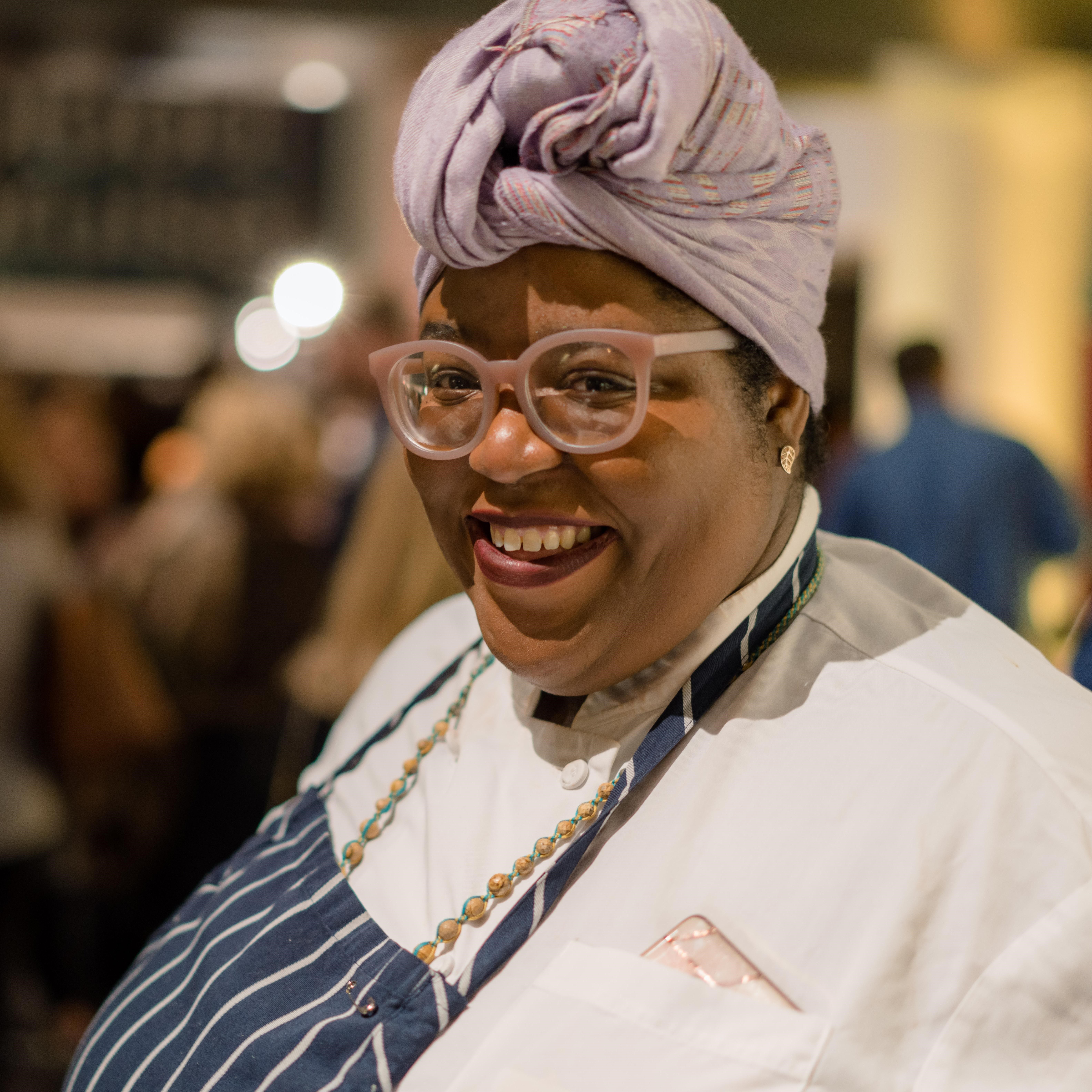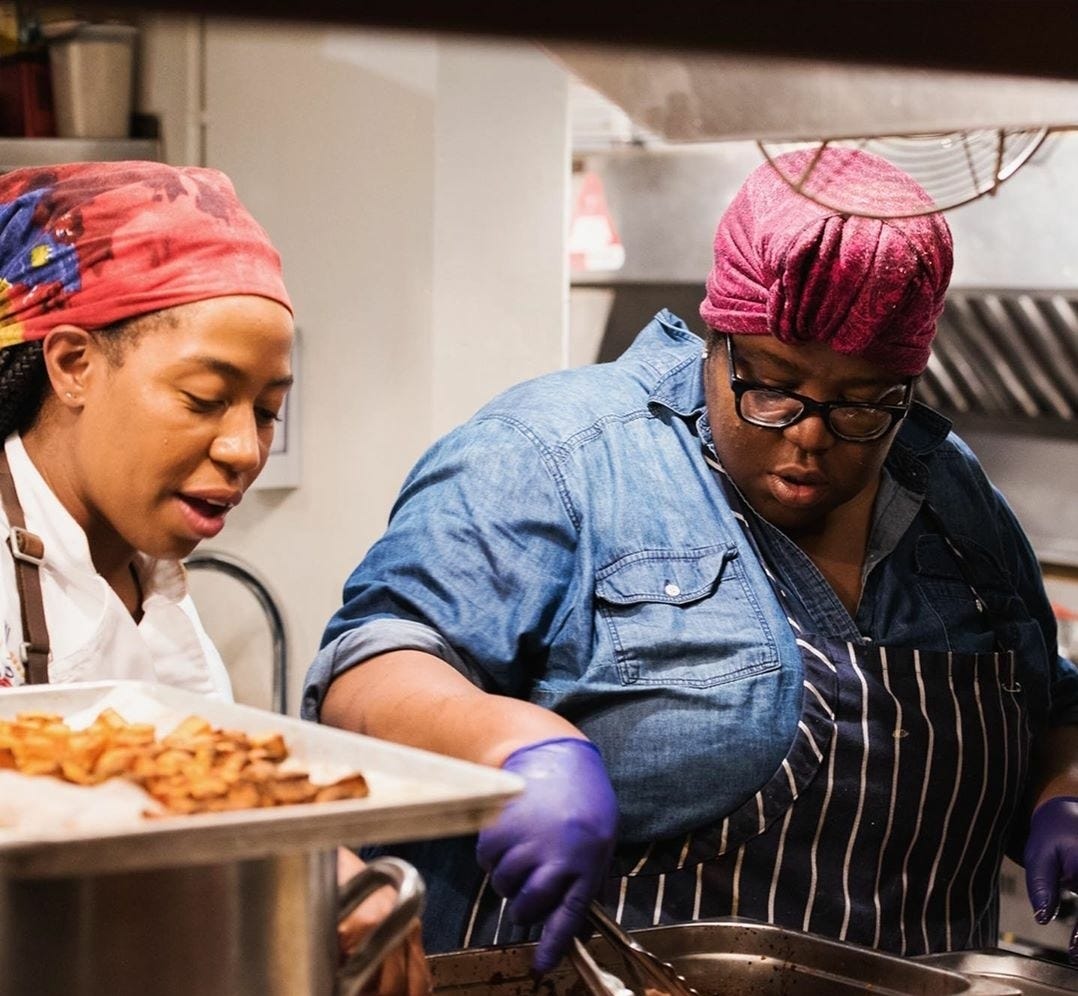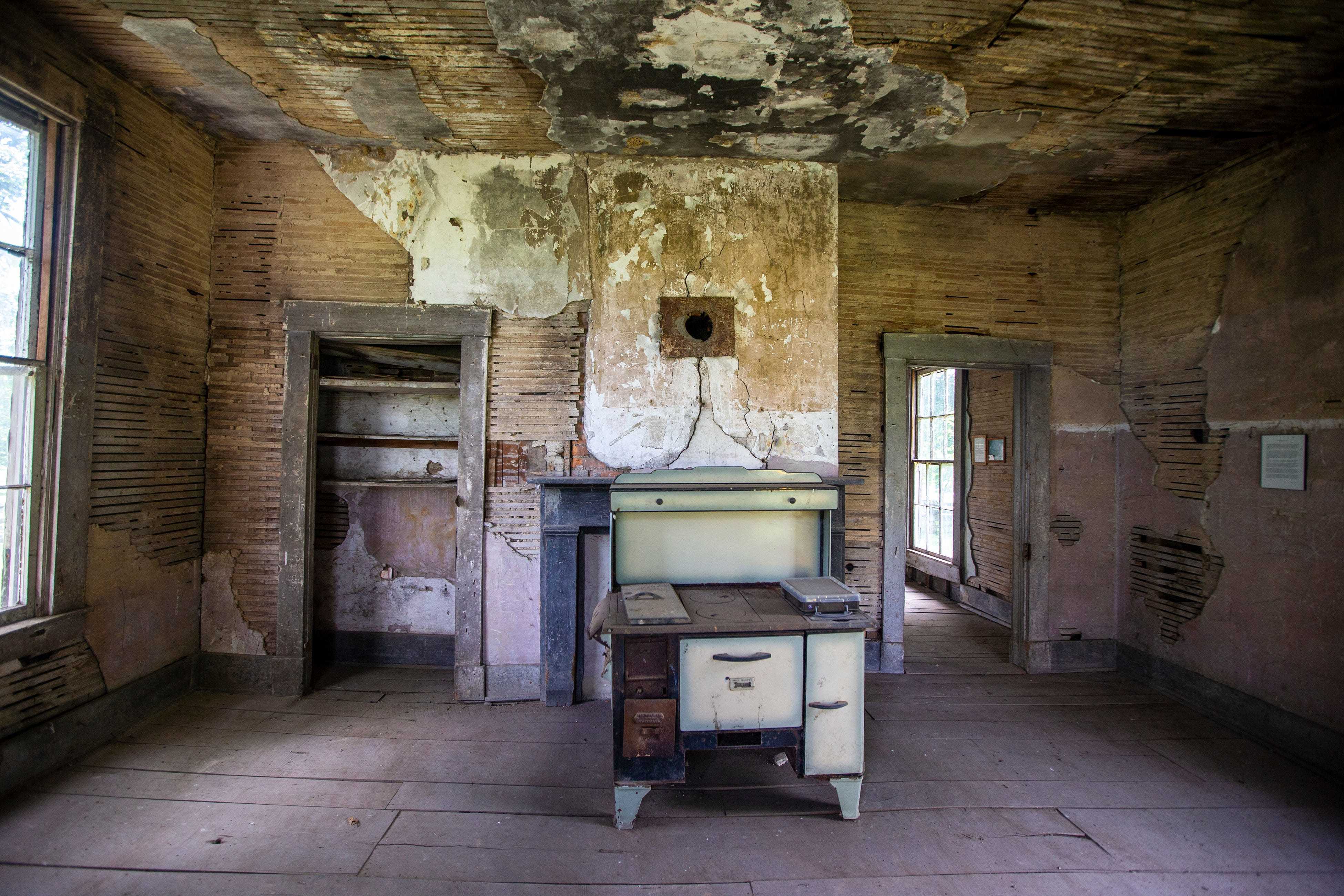Black women may very well be the architects of home cooking and soul food.
Remembering the staples of Africa, they imaginatively concocted and skillfully cooked flavorful recipes that would feed a house full of people.
They had "the magic of cooking in the marrow of their bodies," said Newark native chef Thérèse Nelson, founder of Black Culinary History, which she describes as "a place for reverent examination of our culinary past while supporting the work that will build our culinary future."
And while some would say they did it with food often considered the master’s leftovers, Nelson disagrees. Instead of focusing on what they were given, we should keep in mind "how they were able to negotiate their skillsets" to live.

"I think back to the hog-killing times," Nelson said.
Hog-killing time usually occurred between fall and February. "Normally the men would do the actual slaughtering, but it would be Black women who would do the breaking down and the butchering," Nelson said.
The higher cuts would be sent to market.
"If you were a Black person, your payment would have been the offal [lower cuts of meat] because there was no marketplace for it.
"It's not always the slop leftover narrative," she added. "We saw value in these parts, and made them delicious."

Another example of that is chitterlings, the intestines of pig or cow, which have been a delicacy around the world for centuries.
"The earliest written down recipes for chitterlings (now called chitlins) shows up from a cookbook in Europe from Great Britain in the 1700s," said Denver-based Adrian Miller, a James Beard Foundation Book Award winner, known as the Soul Food Scholar.
Without thorough cleaning before cooking, chitterlings produce a horrible smell. Because slaveholders thought slaves were inferior, enslaved people were given the parts of the animal that no one else wanted to eat.
But chitlins, prepared well by Black cooks, became a staple. (And during the time of Jim Crow, Black musicians and performers would know that a restaurant serving chitlins was safe and accepting of Black people. Those places became known as the "Chitlin Circuit.")
"Slavery was multifaceted," Miller said. "The large plantations that we think of, the things we see on 'Roots,' 'Gone with the Wind,' those were really only 40% of slavery. Most enslaved people were on very small farms where there were only two to five other slaves living on the residence."
Life on a smaller plantation was different from life on a larger, more brutal plantation.

On smaller plantations, enslaved people were eating out of the same pot as the slaveholder and their family, according to Miller. On large plantations, there were different cooking teams.
"A team that cooked for the mansion, the big house, and they were cooking for the white family. Those cooks often ate the same food as the slaveholder, but they were obviously eating leftovers," Miller said.
A separate team existed to feed the large labor force of the plantation, two to three cooks, usually older women because they were no longer productive in the field.
On the smaller plantations, where there may have been more autonomy for enslaved chefs, normally Black women, they could have learned to read because they had to follow certain recipes, Nelson said.
On a larger plantation, an enslaved person's typical day would start with waking up before sunrise and being led to a trough, Miller said.
The trough would be filled with cornmeal and buttermilk mixed together. Once a week they would receive small rations of cornmeal, fish and lard — often leftovers from the master's food. They did not eat with utensils, as that was thought of as a potential weapon. Sometimes they could eat with a seafood shell.
If allowed, slaves could have gardens on the plantation, where they could grow seasonal vegetables to add to the small rations they were given, Miller said.
Meat was a luxury.

After working in the field, slaves would return to the trough for the midday meal. That would be filled with mostly vegetables, and maybe some meat to season.
In the evening, after the work was done, they would have leftovers from the midday meal.
“It was really on the weekends and special occasions that meat was prominent and more of what we think of soul food today: the fried chicken, barbecue, the glorious cakes. All of those things were all celebration foods,” Miller said.
The fried chicken was usually only had once a year — in the springtime. The chicken that had hatched a year earlier would be older but still tender enough to eat.
“That is where that expression 'he/she is no spring chicken' comes from,” Miller said.
All the foods traditionally associated with soul food were eaten only on occasion. During Juneteenth, the emancipation celebration, there was a barbecue, fried chicken, fried fish, watermelon, beverages like red lemonade, red soda water (what Miller calls “red drink”).
The origins of barbecue also come from Africa, Miller said. A barbecue entails the slow cooking of meat — like spare ribs, pork shoulder or brisket — and letting it marinate overnight.
There are instances of masters eating barbecued food, but “the basting that overnight, that was all Black people,” said Marcus Samuelsson, an award-winning chef and food activist, the founder and owner of Red Rooster in Harlem, Marcus B&P in Newark and NoHu Rooftop in Weehawken, and author of "The Rise: Black Cooks and the Soul of American Food."
He recalled the story of Nathan "Nearest" Green, who was born into slavery and after emancipation became a master distiller.
Green taught the distilling techniques of West Africa, sugar maple charcoal filtering, to American distiller Jack Daniel. The filtering created a smooth taste.

"Green was the original founder of the Jack Daniel's recipe — his family hasn’t received one dollar from that," he said. "Black people have always been the executive chefs, the farmers, but never get acknowledged."
Nelson said enslaved people really possessed a power.
"I wouldn't romanticize slavery at all, but there is joy in resilience, in building generational skill, in having ownership of the food, cooking, cultivating and acumen, of the land," she said.
Nelson recalls one of her favorite quotes from culinary historian Michael Twitty: "We were able to enslave the palates of our enslavers."
"Black cooks and Black women had control," Nelson said. "Everything they ate you controlled it, from growing it to cooking it. It's not equity or freedom, but it is power."

MORE IN THIS SERIES
- A world of flavor at your doorstep
- Soul food: A medley of flavors, full of history and celebration
- Slavery, soul food and the power of Black women
- Where tradition is taught: cooking classes, videos with an African flavor
- 'Soul food gets a bad rap': Healthy alternatives helping to re-imagine cuisine
- Remembering Fried Fish Fridays with my grandparents
- New Jersey restaurants: Where to taste the foods of the African diaspora
- Where to taste the foods of the African table in North Jersey
- Find history and flavor in these Rockland, Westchester restaurants with African roots